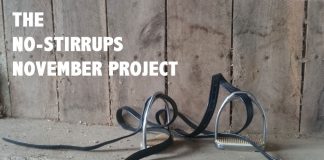Equine Herpes Virus Type 1 (EHV-1) has been in the news throughout the country recently, with outbreaks of the virus occurring in locations as varied as Florida, Connecticut and California. EHV-1 infection can cause respiratory distress, abortions, paralysis and even death — making it a key concern for horse owners, trainers and barn managers.
“Owners should work with their veterinarians to be sure that an appropriate vaccination schedule is in place for all of their horses,” says Robert Holland, DVM, Senior Veterinarian at Pfizer Animal Health. “Rhinomune(R), a modified-live vaccine, triggers an effective immune response and works as an aid in the prevention of respiratory disease caused by EHV-1.”
The symptoms of EHV-1 are extremely diverse and can include fever, nasal discharge, cough, anorexia and a general malaise for the affected horse. The neurologic form of the disease often begins with a high fever, followed by several days when the horse appears to be recovering. After about six to 10 days, however, affected horses begin to exhibit neurological signs such as hind limb weakness, and even an inability to rise after lying down. The outlook for horses that are unable to get up from a sitting position is not favorable — paralysis and death may follow in severely affected animals.
EHV-1 can also cause abortions and stillbirths in pregnant mares exposed to the virus. These abortions can sometimes occur anywhere from the fifth month of gestation through the 11th month and result in a fetus that appears normal. The virus can be found in the placenta and fetus after abortion. For large breeding facilities this is a particular concern as EHV-1 can spread rapidly through a herd of mares, creating a frightening situation known as an “abortion storm”.
The virus is transmitted through both direct and indirect contact with infected horses, and can be spread via water buckets, feed tubs, tack, grooming equipment and even on the hands and feet of people caring for affected animals. The virus is particularly hard to manage because a horse may become latently infected and not display symptoms for many years after infection. In fact, it is believed that up to 80 percent of horses are latently infected with EHV-1. The disease may lie dormant for a long time, and then be activated by periods of stress caused by training, competition, transportation or other environmental stressors.
Rhinomune(R), a modified-live vaccine, helps prevent respiratory disease caused by EHV-1. It is safe for healthy horses three months of age or older and in pregnant mares after the second month of pregnancy. Vaccination of all horses on the premises is recommended to enhance herd immunity. Rhinomune does not currently have a label claim for protection against the neurologic form of EHV-1 or abortion by mares following exposure to the virus. However, Rhinomune is effective against the respiratory spread of EHV-1, which all of these other presentations of the virus rely upon.
In addition to vaccination, managers can help reduce the chances of infection by regulating horses coming in and out of their facilities — housing incoming horses separately for the first two to three weeks. Proper ventilation will also help to cool an area, remove disease pathogens and control moisture. A strong disinfection program — including water buckets, tack, grooming equipment and barn staff, is another step to keeping possible infections in check.
Before a horse is exposed to stressors such as travel, competition, or changes in their environments, it may be advisable to help stimulate their immune system through the use of Pfizer’s scientifically demonstrated immunomodulator, Zylexis(TM). Consisting of inactivated (killed) parapox ovis virus, Zylexis aids in the reduction of upper respiratory disease associated with EHV-1 and EHV-4. Zylexis is safe for use in healthy horses, including foals four months of age and older.






Thank you for this article. It was very informative.